
Halifax Citadel signal post
Halifax Citadel National Historic Site
Ever wonder what the large masts towering over the Halifax Citadel are for?
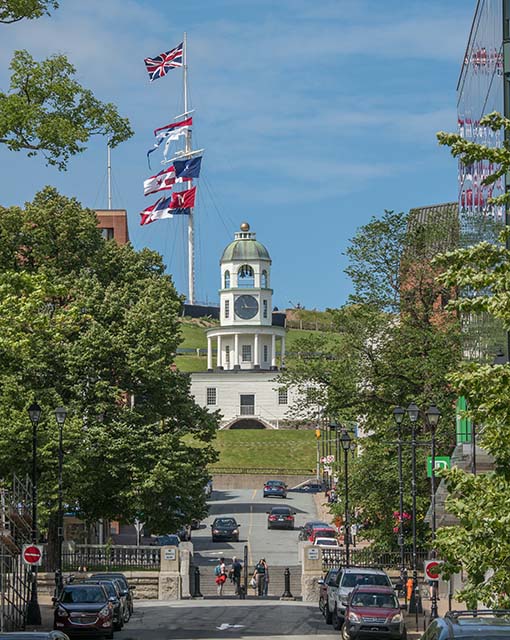
The commercial signal mast and the military signal mast were prominent features on the Halifax skyline that served as vital means of civilian and military communication before the advent of electronic telecommunications.
The two masts made up the Halifax Citadel signal post over 150 years ago.
While the signal masts no longer serve as a communications tool, replicas of the masts that were used as signaling systems are still “dressed” today with flags and pennants, recalling the colour and pageantry of days gone by.
The heritage interpretation program at the Halifax Citadel National Historic Site brings to life this impressive and colourful tradition.
Learn more:
Commercial signalling
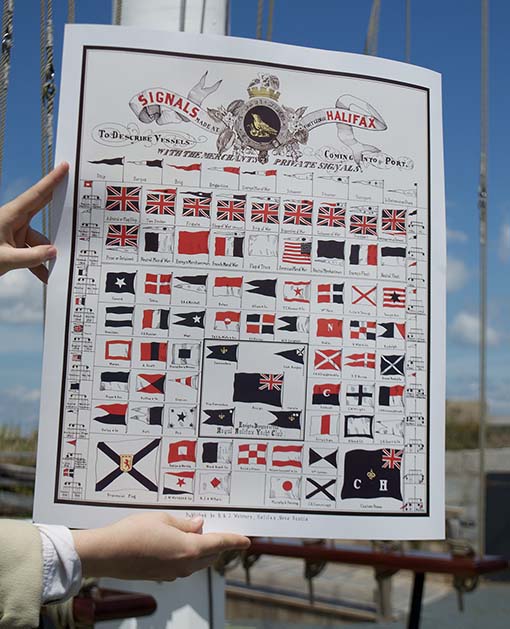
The commercial signal mast at the Halifax Citadel was used by the British army to communicate marine traffic in the harbour to the public. The commercial mast was highly visible throughout this bustling port city, standing 140 feet tall (42.6 metres) and rising 117 feet (35.6 metres) above the ramparts of the fort.
The variety of signals hoisted on the mast indicated the number of ships, their nature, nationality, approaching direction, and port of departure. A second, smaller yard arm was added to the mast in the 1850s to indicate the movement of steamships. This information gave citizens, particularly local merchants, 4 to 5 hours to prepare for the impending arrivals.
Merchants were responsible for providing their own company flags to the military who operated the signal post. The signal code used on the commercial mast was well-known to local citizens, with local almanacs and newspapers publishing descriptions of the commercial signals as well as diagrams for how to read them.
The commercial mast became more of a tradition than a necessity with the invention of the electric telegraph and telephone. Still, this service remained so useful to the Halifax economy that the Chamber of Commerce paid for its upkeep from 1868 to the 1930s, with the army continuing to operate the mast as a courtesy until the 1950s.
Today the Citadel's heritage interpretation program flies one and sometimes two historic commercial signals a day from May through to October 31. Most of these are historical and refer to merchant houses that no longer exist – though on occasion, a real signal is still sent.
Military signalling
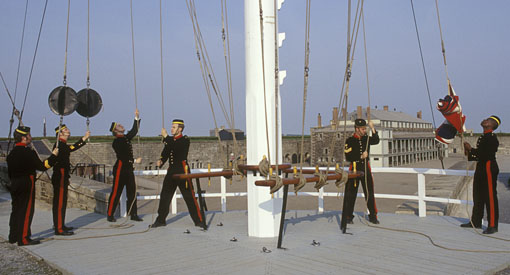
The British army had perfected a military telegraph system in the 19th century that consisted of masts with yards that used flags and disks as signals to transmit coded sensitive and restricted military messages.
Standing 78 feet above the ramparts of the fort, the military signal mast at the Halifax Citadel was a vital tool for efficient and reliable military operations.
The disks and flags were attached to the appropriate halyards and hoisted at the same time. The combination of flags and disks corresponded to numbers depending on where on the mast or yard they were positioned. There were never more than four disks hoisted at the same time, and never more than two upon the same halyard.
A military code book was required to decipher the meaning of these numerary signals, however, military code books were given to authorized personnel only.
Signals were transmitted between four signal posts throughout Halifax, including the outermost post at Sambro Island and two repeater posts at Camperdown and York Redoubt. The Halifax Citadel was the operational headquarters for the entire system, managed by the Director of Signals.
The Director of Signals was responsible for supervising the overall operation, ensuring all equipment was in proper working order, preparing all signals for transmission, deciphering incoming messages, and recording every signal sent and received in a journal. Other staff included three hoisters, responsible for raising the appropriate signals and routine maintenance of the signal equipment, as well as two messengers.
Signals remained in place until they were acknowledged by another signal post (normally not longer than five minutes). Once the Director received a message, they would dispatch a messenger to deliver it to the appropriate person, often the General Officer Commanding. The extra pay that the Director received could be forfeited for inaccuracies or for not answering a signal from one of the other posts within five minutes from the time it was hoisted.
Today the heritage interpretation program at the Citadel recreates military signals for display purposes, sending historic signals as they once did in the days just before the electrical telegraph was commonplace.
Diagrams of secret military signal codes
Note how the position of the flags and disks corresponds to different numbers that only certain few knew how to interpret. The position of the disks on the mast were numbered from 1 to 9. The flag could be flown from positions indicating 100, 200, 300, or 400.
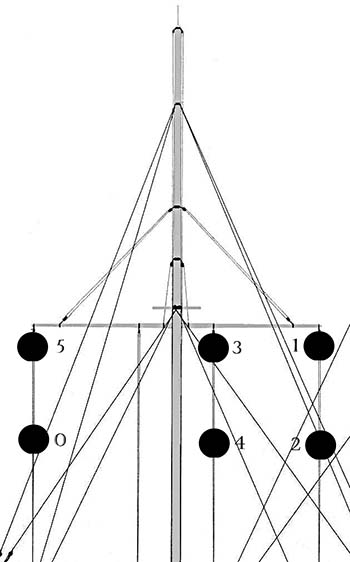
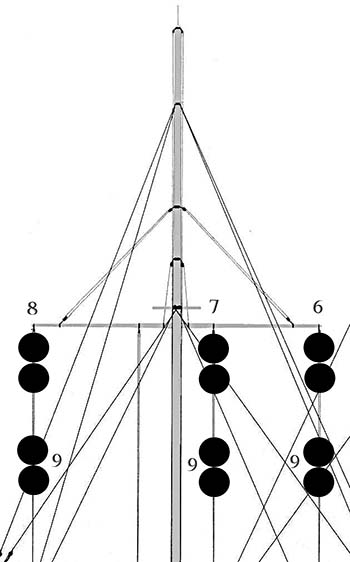
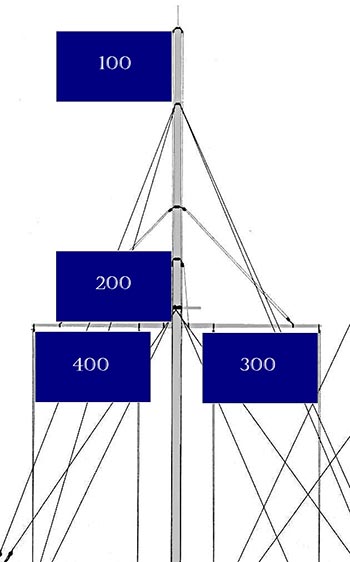
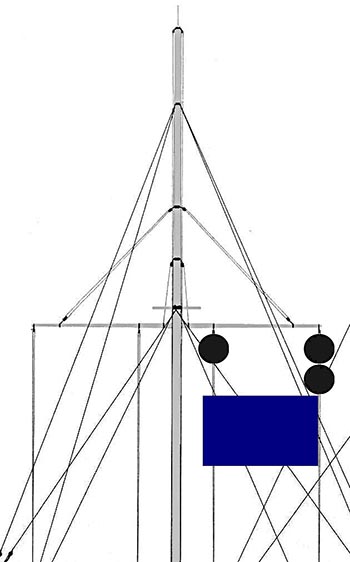
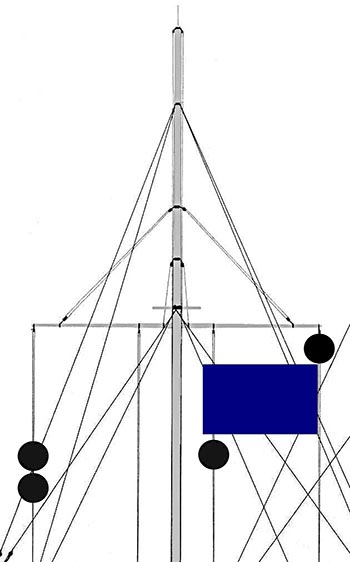
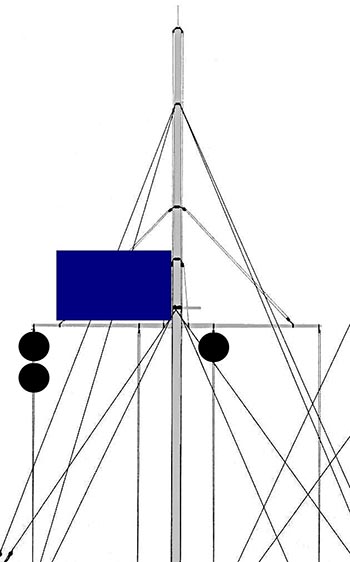
Other flags
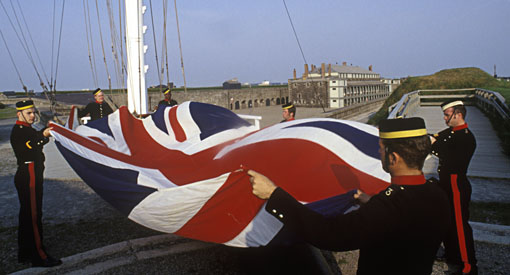
In addition to the flags on the signal masts, there are two other prominent flags flown at the Citadel.
The Canadian flag is flown on the official mast at the front entrance of the Citadel.
The historical garrison flag (the Union Jack) is flown on a mast located in the south-west demi-bastion of the fort.
Related links
- Date modified :